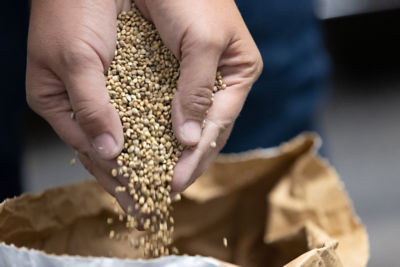Causal Agent
Golovinomyces cichoracearum (synonym = Erysiphe cichoracearum)
Podosphaera xanthii (synonym = Sphaerotheca fuliginea)
Distribution
Worldwide
Symptoms
All cucurbits are susceptible to powdery mildew. Symptoms appear as pale yellow spots on stems, petioles, and leaves. Infection may occur on the upper and/or lower leaf surface. As the spots enlarge, conidia are produced from affected tissue and the spots take on a powdery appearance. Infected leaves gradually turn yellow and may become brown and papery. In general, cucurbit fruits are not directly attacked by powdery mildew fungi. However, due to the loss of plant foliage, fruit may be exposed to direct sunlight, resulting in sunburn and reduced fruit quality. Fruit infection, although rare, can occur on watermelon and cucumber.
 Powdery mildew on watermelon.
Powdery mildew on watermelon.
 Powdery mildew on squash.
Powdery mildew on squash.
Conditions for Development
The fungi that cause powdery mildew are obligate parasites, meaning that they require a living host to survive. These fungi commonly overwinter on weeds and are carried for long distances by air currents. Infection can take place without free moisture on the plant surface, although high humidity (50–90% RH) is necessary. Colonization, sporulation, and dispersal of conidia are favored by dry conditions. Disease development is favored by vigorous plant growth, moderate temperatures, low light and dew formation. Infection can occur between 10–32ºC (50–90ºF) with an optimum temperature for infection between 20–27ºC (68–80°F).
Control
Grow resistant varieties when available. Implement a preventative fungicide spray program to delay infection and help lower disease incidence. In protected culture, avoid practices which promote lush growth. Weed control and good sanitation practices can also aid in controlling powdery mildew.




